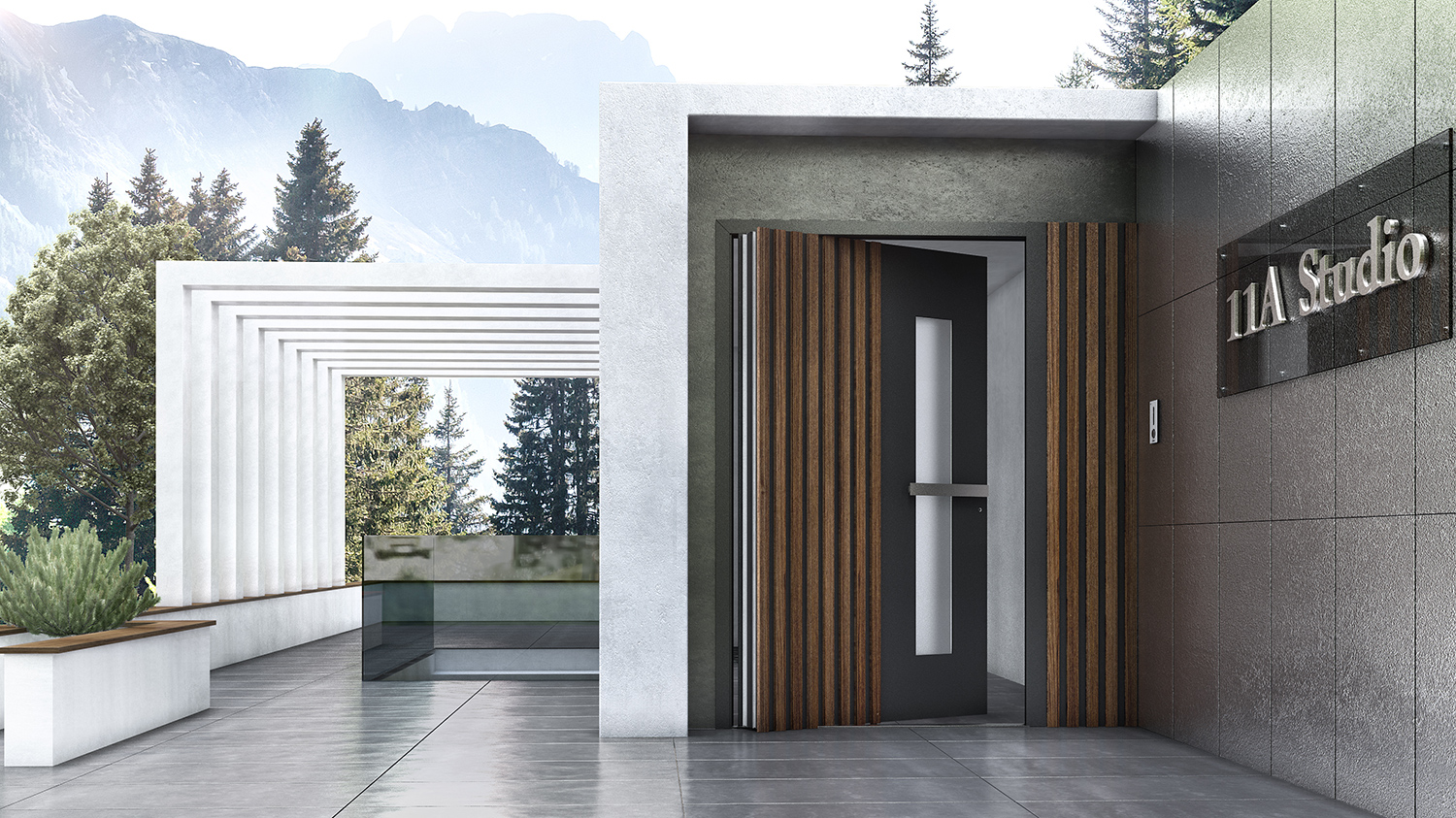The Architects' guide to pivot doors 2020
Pivot doors have for some time been a popular choice amongst architects.
If you're considering installing a pivot door into your next project, then we can help.
This go-to guide from Spitfire Doors will provide you with everything you need to know about pivot doors, and how to effectively incorporate them into your architectural projects.
This guide will cover:
- The history of pivot doors
- How pivot doors operate
- Why pivot doors?
- Materials used in pivot doors
- The benefits to choosing a pivot door
- What to look for when specifying a pivot door
- Our pivot door technical specifications
Let's get started…
THE HISTORY OF PIVOT DOORS
Throughout history doors have been continually adapted to test the limits of architecture and design, creating a multi-billion-dollar industry.
Front doors are the pivotal focus of any home, with the ability to anchor its style and aspect, to make a striking first impression.
Pivot doors provide just this.
Evolving from contemporary design, this type of door has gained popularity amongst architects over the past five years, becoming the hottest entrance trend.
Today’s architectural landscape is seeing a shift in their use, from being a sole commercial product to becoming the go-to for homeowners designing or remodelling a custom home, to create a high-end and custom feel.
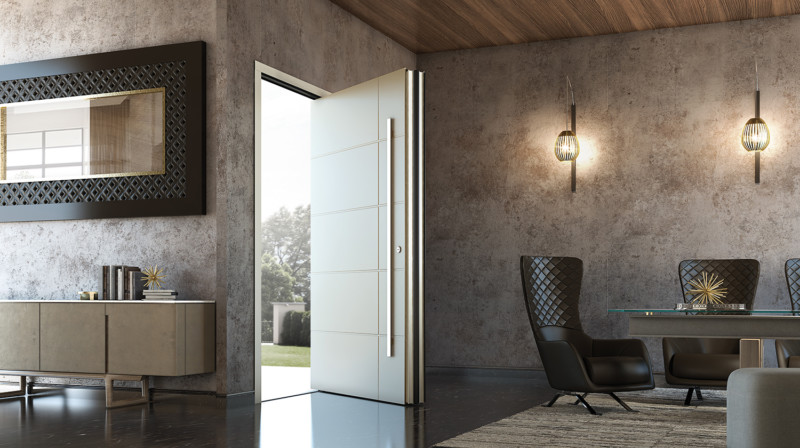
HOW PIVOT DOORS OPERATE
Unlike traditional jamb-hinged doors, which open using a side hinge, pivot doors open by rotating on a pivotal system or pivot box.
This pivoting system is permitted due to two pivot hinges which are positioned 200mm from the edge of both the top and bottom of the door.
This positioning of the pivot hinges enhances weight distribution, distributing it evenly, unlike traditional side-hinged doors.
The use of a pivot stabilises the door, by allowing the door to rotate on a point with no wrap movement.
This functionality can alter depending on its feature variations. The point of movement/pivot can be both central and asymmetrical.
This makes them functional for oversized and uniquely shaped entrances.
The practicality of the opening system of this door type is a result of the pivot box. Simply a gentle push on the door activates the pivot creating a smooth opening.
However, it must be said that these doors can see weather stripping issues.
To avoid this, pivot doors must be made from the highest quality material, be air and water tight and use an auto-drop base weather seal.
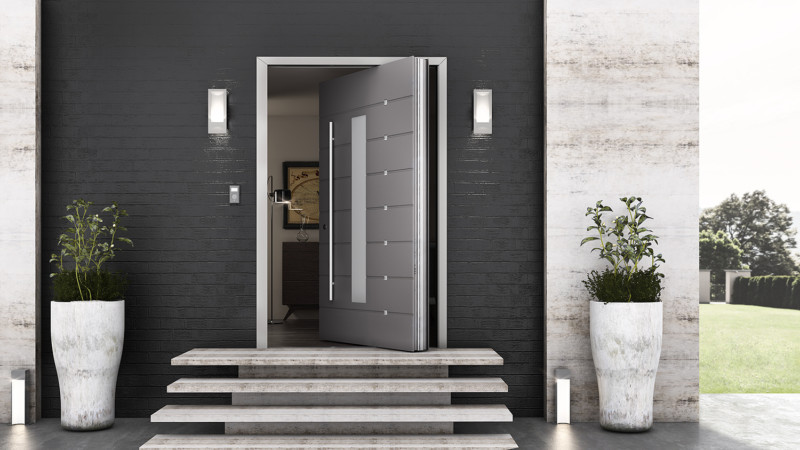
WHY PIVOT DOORS?
Pivot doors provide projects and homes with a leading-edge in terms of architecture and style.
Due to being the face of a home, it is vital the front door is utilised to make an innovative and bold statement that reflects the atmosphere and ambiance of a house.
Pivot doors combine the 2 latest home architectural trends:
- Houses with stronger indoor/outdoor connectivity.
- Facilitating this connectivity through the use of large scale doors.
The design allows occupiers to greet their guests in remarkable style, whilst the unique pivot mechanism provides a real talking point.
MATERIALS USED IN PIVOT DOORS
The materials used in the construction of this type of door are sizeable.
Products that can be utilised when creating doors include, wood, steel and most effectively aluminium.
Pivot doors can also be uniquely customised and developed to the architects needs and can include glass inserts, LED lighting or as a solid panel.
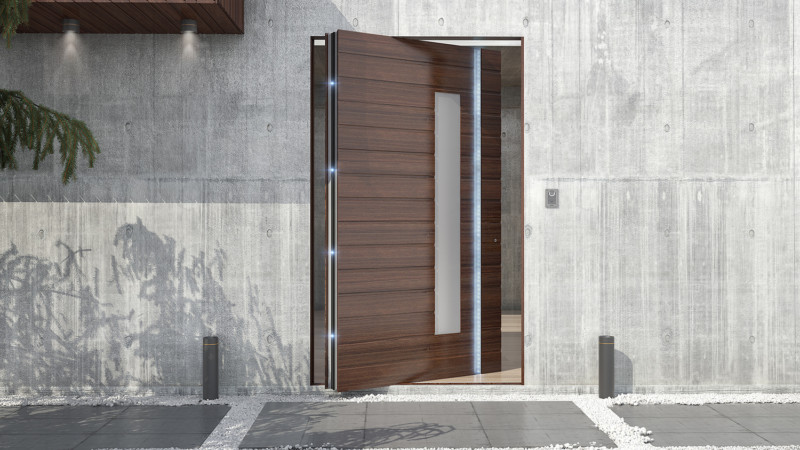
THE BENEFITS TO CHOOSING A PIVOT DOOR
- APPEAL
Whilst allowing you to make a unique entrance and first impression, pivot doors provide a luxurious futuristic feel.
The wide and playful opening of this type of door complements contemporary architecture.
- OPERATION
The operating function and design of pivot doors masks their strong and heavy nature, making them appear lightweight whilst also making a bold design statement.
The operating hardware of pivot doors can also be enhanced to alter its closure and travel speed.
Finger print entry is another option which increases security and provides convenience for its handlers.
Another innovative option is to install LED lighting which aids night time entry and use.
- SCALE
Pivot doors are custom made, providing them with the ability to be built with a larger square footage compared to traditional doors.
The dimensions of pivot doors can reach an outstanding 3 metres in height and 2 metres wide and its custom-made design provides you with the freedom to "make a grand entrance".
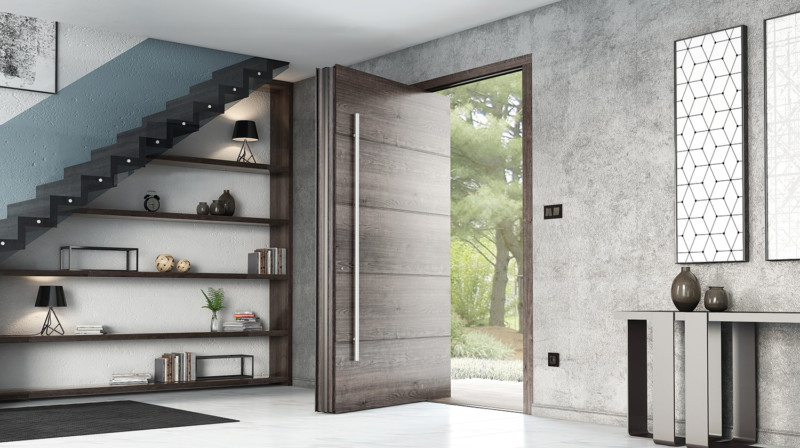
WHAT TO LOOK FOR WHEN SPECIFYING A PIVOT DOOR
Identify the overall aim of your pivot door.
Do you want simplicity, a bold statement or a high-tech design? Therefore, you can tailor your architectural needs into your custom pivot door.
Ensure the right material is selected.
Unlike traditional timber doors, aluminium pivot doors only require minor maintenance due to the nature of the material.
Use an experienced and established company with a history and real-world presence.
SPITFIRE TECHNICAL SPECIFICATIONS
Our S-700 doors come with a choice of exciting finishes including:
- Carbon fibre effects
- Glass inserts
- Built in LEDs covering the height of the door
We have of 21 doors in our S-700 range, our 1012, 1003, 1018 and 1008.
Each pivot door in the Spitfire range is provided with:
- 3mm Aluminium walls
- UD value of 1.5 W/m2k (w/m2k)
- Class 3 air tightness
- Class 1A water tightness
- C5 wind load resistance
- Soundproof to 34db
- Auto-drop base weather seal
We hope this guide has been helpful.
At Spitfire we are here to provide you expert advice to help you in choosing the perfect pivot door for you.
Call us now on: 01625 412 570
Or contact us here.
We’ll be happy to help.
